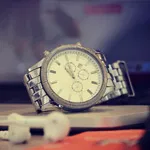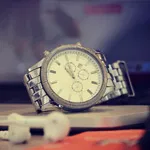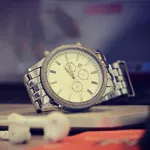Cutting Edge or Gimmick? A Look at Smartwatch-Luxury Hybrids
In recent years, the world of luxury timepieces has seen a fascinating evolution with the introduction of smartwatch-luxury hybrids. These innovative devices aim to blend the craftsmanship and elegance of traditional luxury watches with the advanced technology and features of smartwatches. However, the question remains: are these hybrids cutting-edge advancements in horology or merely gimmicks designed to capture a new market?
At the heart of this debate is the persistent allure of traditional luxury watches. Renowned brands like TAG Heuer, Garmin, and Montblanc have ventured into this hybrid space, trying to maintain their legacy while adapting to the ever-evolving demands of tech-savvy consumers. The appeal of a luxury watch lies not only in its aesthetic but also in its craftsmanship, heritage, and the status it confers upon its wearer. Hybrid smartwatches seek to preserve these qualities while integrating features like fitness tracking, notifications, and customizable watch faces.
One of the standout examples is the TAG Heuer Connected series. This watch boasts a striking design that mirrors the elegance of TAG Heuer’s classic timepieces while offering smart features such as GPS tracking, heart rate monitoring, and compatibility with various apps. With a premium price tag, it targets a demographic that values both luxury and functionality. However, critics argue that the digital components may detract from the intrinsic value of a luxury watch, which is often defined by its mechanical movement and fine craftsmanship.
Similarly, Montblanc’s Summit series combines luxury aesthetics with smart features. These watches are crafted with high-quality materials and reflect the brand's commitment to excellence. They offer customizable dials, fitness tracking, and notifications, appealing to consumers who desire a watch that can keep up with their active lifestyles. Yet, some purists question whether a watch that requires charging and relies on technology can truly embody the essence of luxury watchmaking.
On the other hand, some luxury brands have approached the smartwatch hybrid concept with a more traditional mindset. For instance, the Garmin Fenix series blends advanced outdoor and fitness features with a rugged design, appealing to luxury adventurers. While not a traditional luxury watch, its premium materials and capabilities have garnered a niche following among those who prioritize functionality in demanding environments.
As we assess the merit of smartwatch-luxury hybrids, it's essential to consider the target audience. Younger consumers, who may prioritize technology and convenience over tradition, are increasingly drawn to these hybrids. Brands that successfully strike the right balance between luxury craftsmanship and modern technology may find themselves at the forefront of a new market trend. However, for the traditionalist, the heart of luxury watchmaking lies in its heritage and timelessness, qualities that hybrids may struggle to replicate.
Ultimately, the future of smartwatch-luxury hybrids will likely depend on how effectively brands can merge the best of both worlds. As technology continues to advance, so too will consumer expectations. While some may view these hybrids as gimmicks, others see them as an exciting evolution of luxury watches that can coexist with traditional timepieces. The challenge for brands will be to innovate while respecting the rich history of horology, ensuring that luxury remains synonymous with quality, craftsmanship, and timeless appeal.
In conclusion, the smartwatch-luxury hybrid trend is a double-edged sword. It represents a significant shift in the watch industry, catering to a new generation of consumers who seek both style and functionality. Whether these hybrids are cutting-edge or gimmicky is subjective and ultimately depends on individual values and preferences. As the luxury watch landscape continues to evolve, one thing is clear: the conversation surrounding the intersection of technology and tradition is just beginning.









